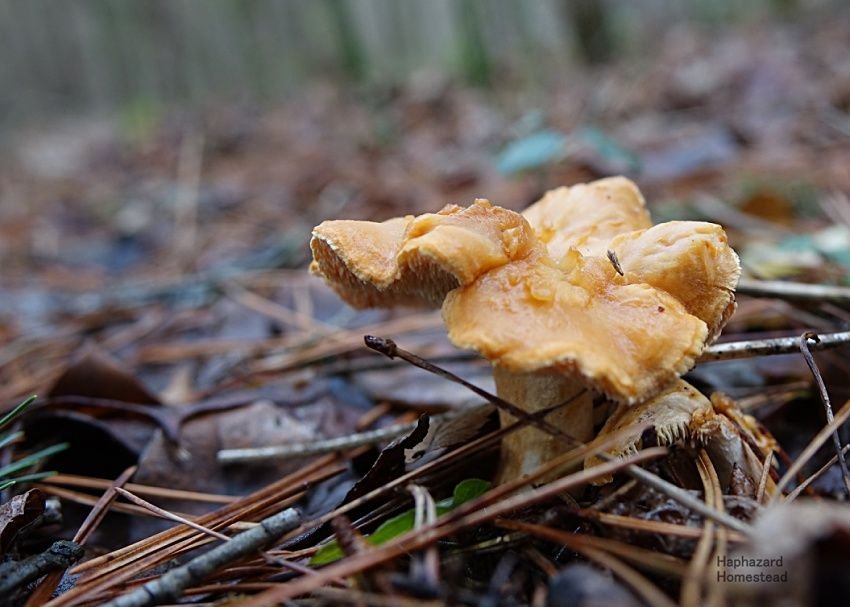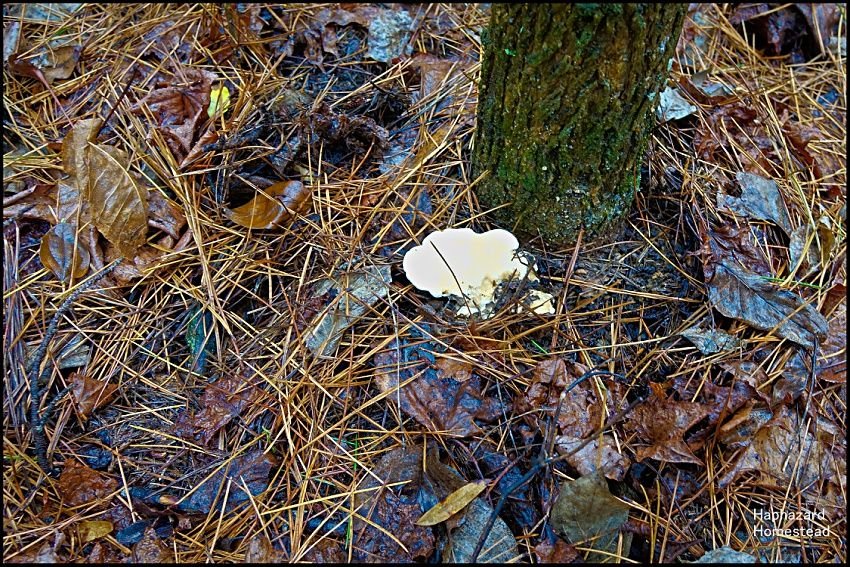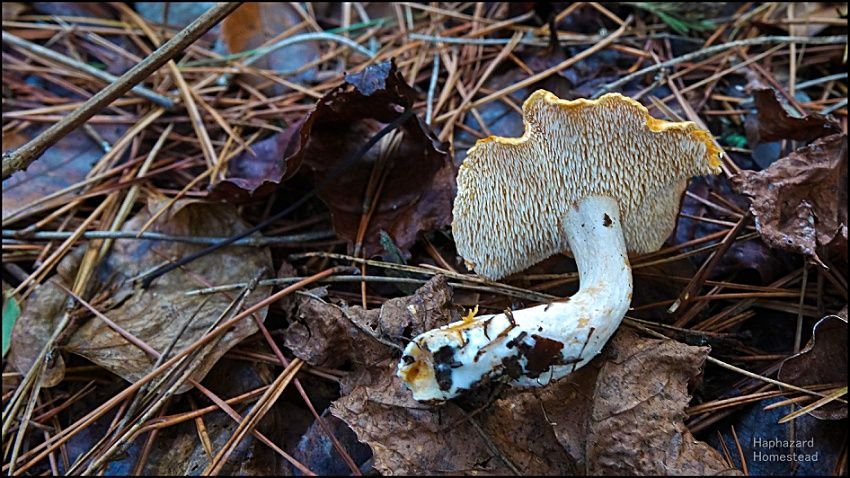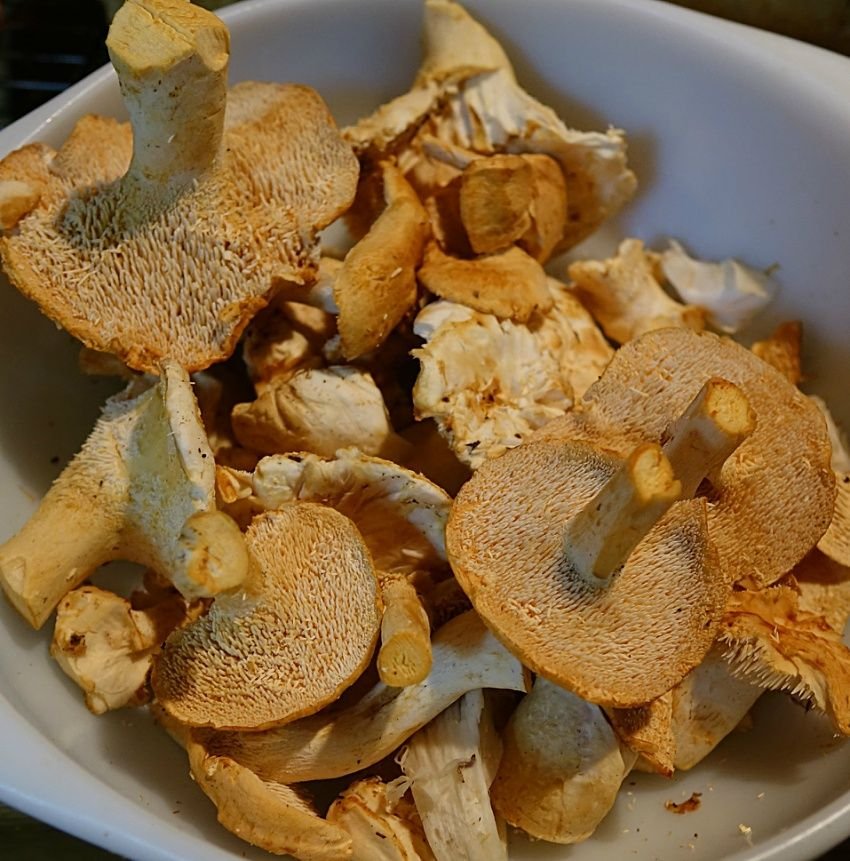I confess, I eat hedgehogs. Hedgehog mushrooms, that is! Here are some tips for identifying, harvesting, and cooking two kinds of Hedgehogs that I look forward to finding every year.

Hedgehogs Are Great Mushrooms!
Hedgehog mushrooms (Hydenum spp.) are a great wild fungus for a novice mushroom forager. Why?
- They don't have any dangerous look-alikes. Their few key features are distinctive.
- If you find a patch of hedgehogs, chances are they will be in that same spot for years to come, unless there is a big disturbance of the soil or vegetation.
- Insects don't bother them much. So there's no disappointment in discovering a great patch of mushrooms and then finding them all eaten up by slugs or maggots. And hedgehogs stand well in the woods without spoiling. They tend to dry up rather than rot.
- Hedgehogs are easy to process for cooking. And they can keep for a week or more in the refrigerator and still be high quality.
- And Hedgehog mushrooms taste really great! I think they are as good as chanterelles!
Last winter, I visited my parents in Arkansas. They have several areas on their 40 acres where two species of hedgehogs come up every year. But some sort of Hedgehog mushroom grows in many other parts of the world.
How to Know a Hedgehog Mushroom
Hedgehog mushrooms share their root system with some of the plants around them, in a symbiotic relationship that benefits both the hedgehog and its plant partner. That means that if you find a patch of hedgehogs, they are likely to be there every year, if the weather is right. Fall is time they usually pop up, but we found these in December.
Hedgehogs grow like a regular mushroom, with a stem that comes out of the ground. The top of hedgehogs aren't really round - they are more like a wavy, amoeba shape. The underside of the mushroom cap is unique. They have spiny teeth under their cap -- not gills, but little, brittle spines.
The Spreading Hedgehog
The most common hedgehog at my parents' place is Hydenum repandum, commonly called just the Hedgehog mushroom or the Spreading Hedgehog. H. repandum has tiny teeth that sometimes go a little ways down the stalk. The top of the cap is a basic white or beige. At my parents' place, they grow in stands of shortleaf pine (Pinus echinata), and are the biggest of their two kinds of hedgehogs.
H. repandum are easy to see and fun to pick, because usually there are quite a few in the same area. The trick is to keep the dirt and detritus on the base of their stems from getting into the spines of the cap. We handle them carefully and cut off the base before putting the hedgehogs in the baskets we use to carry them home.


The Terra Cotta Hedgehog
The Terra Cotta Hedgehog mushroom, Hydnum rufescens has some distinct differences from the Spreading Hedgehog. From the underside, you can its spines are more coarse. And they don't go down the stem, which is pretty much in the center of the mushroom. The top of the Terra Cotta Hedgehog is colored like its name, a brownish-red, and more rough-textured.
The Terra Cotta Hedgehogs are harder to pick, because they seem to be symbiotic with Common Greenbrier (Smilax rotundifolia) and Bull Greenbrier (S. bona-nox). So we have to scramble around in thick stands of long, intertwined vines with lots of thorns. But that's OK, because these colorful Hedgehogs are plentiful. It's worth the effort to bull into the brush!


How to Cook a Hedgehog Mushroom
Hedgehogs are easy to use in the kitchen - as long as you've picked clean, without getting dirt, pine needles, and other grit in those little spines. Because they grow in the forest duff, and are bug free, they are usually clean enough to use without washing.
This bowl has both kinds of Hedgehog mushrooms. Can you tell the Hydenum repandum laying on its side on the far left, from the H. rufescens with their stems pointing up?
The whole Hedgehog mushroom is good - the cap, the stem, and those spines. So getting them ready to cook is as easy as chopping them up. That's all there is to it.

Like so many mushrooms, hedgehogs do need to be cooked - they shouldn't be eaten raw. And like so many mushrooms, they seem dry, but they really have a lot of moisture in them. That can be a good thing, if you use them in a stir-fry. Or it can be a problem, if you are are trying to fry them in oil - they will get slimy and who wants that?
The easiest thing to do is dry saute them. Just put them in a hot skillet and turn the heat down to medium. Don't put anything else in the skillet - no butter, no oil, no spices. The heat will bring out the liquid in the mushrooms. Then just watch them until the liquid is cooked off. The mushrooms will brown up and keep their firm texture.
The picture below gives you an idea of how much water was in those hedgehogs in the bowl. Once the mushroom liquid is cooked off, you can use them like any cooked mushrooms.

My mom used this batch of Hedgehog mushrooms in a basic cream gravy with wild chives. The traditional mushroom flavor of the Hedgehogs really comes through in a basic dish like this. It was perfect over a baked potato.
There are a couple other foraged foods on this plate, too. Over on the far left of the plate, are roasted American Chestnuts (Castanea dentata). They grow from a scrubby bush these days, rather than the giant trees wiped out decades ago by the Chestnut blight. And the meat is a gray squirrel(Sciurus carolinensis), one of my favorites! My mom knows how to cook! It's not farm to table - it's forest to table!

Species List
- Spreading Hedgehog Hydenum repandum
- Terra Cotta Hedgehog Hydnum rufescens
- American Chestnuts Castanea dentata
- Gray Squirrel Sciurus carolinensis
What Do You Think?
I hope you get a chance to find some wild hedgehog mushrooms sometime!
- Have you ever seen hedgehog mushrooms?
- What are your thoughts on eating wild mushrooms?
- Have you ever eaten hedgehog mushrooms?
- Have you seen any wild mushrooms lately?
I write about foraging because I believe that we can all have lives that are richer, more secure, more grounded, and more interesting by getting to know the plants and the land around us – in our yards, our parks, and our wilderness.
I would like Steemit to be the premier site for Foraging on the Internet! If you have any thoughts about foraging, or experiences to share, write a post and be sure to use the Foraging tag. And check out the @foraging-trail to see curated quality posts about foraging. Happy Foraging!
** Haphazard Homestead **

